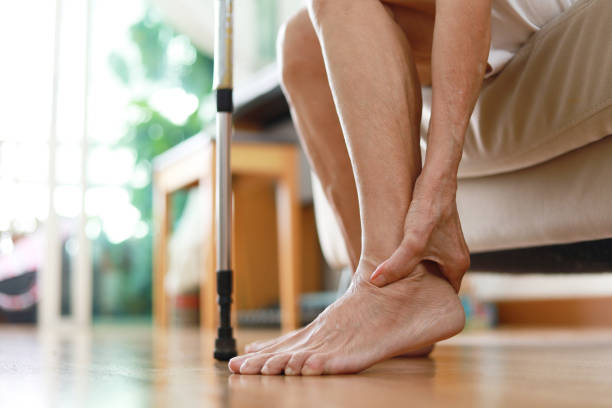As we age, maintaining joint health becomes increasingly important. Joint pain and stiffness can hinder mobility, reduce quality of life, and impact overall well-being. For seniors, adopting a proactive approach to joint health is essential to maintaining independence and an active lifestyle. This article will explore strategies from a physical therapist’s perspective on maximizing joint health in seniors.
Contents
- 1 Understanding Joint Health in Aging
- 2 Exercise: The Cornerstone of Joint Health
- 3 Low-Impact Activities
- 4 Strength Training
- 5 Stretching and Flexibility
- 6 Nutrition: Nourishing Joints from Within
- 7 Omega-3 Fatty Acids
- 8 Antioxidant-Rich Foods
- 9 Hydration
- 10 Managing Joint Pain and Stiffness
- 11 Heat and Cold Therapy
- 12 Manual Therapy
- 13 Assistive Devices
- 14 Preventive Measures for Long-Term Joint Health
- 15 Weight Management
- 16 Posture and Ergonomics
- 17 Regular Check-Ups
- 18 Wrapping Up
Understanding Joint Health in Aging
The aging process naturally affects the body’s musculoskeletal system. Joints, which connect bones, endure years of wear and tear. Cartilage, the smooth tissue covering bones at the joints, may thin, and synovial fluid, which lubricates joints, can decrease. These changes can lead to stiffness, pain, and reduced mobility. Understanding these changes allows seniors and caregivers to address joint health more proactively.
Exercise: The Cornerstone of Joint Health
Regular physical activity is one of the most effective ways to maintain joint health in seniors. Physical therapists recommend low-impact exercises that improve flexibility, strength, and joint function without placing excessive strain on the joints.
Low-Impact Activities
Activities like walking, swimming, and cycling are excellent for seniors. These exercises keep joints moving without causing unnecessary stress. Additionally, water-based exercises reduce the impact on joints while providing resistance to strengthen muscles.
Strength Training
Building muscle strength helps support and stabilize joints. Incorporating resistance training twice a week can enhance joint support and decrease pain. Physical therapists often recommend using resistance bands or light weights to build muscle without overloading the joints.
Stretching and Flexibility
Stretching routines, particularly those focusing on the lower back, hips, knees, and shoulders, help maintain a range of motion. Gentle stretching before and after physical activity can minimize stiffness and improve joint flexibility. Yoga and tai chi are excellent practices for combining movement with stretching, promoting both physical and mental well-being.
Nutrition: Nourishing Joints from Within
Diet plays a crucial role in joint health. Incorporating foods rich in anti-inflammatory properties can help reduce joint pain and stiffness.
Omega-3 Fatty Acids
Fatty fish like salmon, mackerel, and sardines are rich in omega-3s, which reduce inflammation. Including these in a weekly meal plan can benefit joint health significantly.
Antioxidant-Rich Foods
Berries, green leafy vegetables, and nuts contain antioxidants that combat oxidative stress, which can worsen joint inflammation. Including a variety of these foods in the diet helps support joint function.
Hydration
Staying hydrated ensures that the synovial fluid within joints remains sufficient to lubricate and cushion movement. Seniors should aim to drink adequate water daily to maintain joint health.
Managing Joint Pain and Stiffness

For seniors already experiencing joint discomfort, a physical therapist can develop tailored pain management strategies.
Heat and Cold Therapy
Heat therapy, such as warm baths or heating pads, helps increase blood flow and reduce stiffness. Cold therapy, including ice packs, can reduce swelling and numb sharp, numbing pain.
Manual Therapy
Physical therapists may use massage or joint mobilization techniques to improve circulation and relieve joint tension. These therapies can help alleviate discomfort and enhance joint mobility.
Assistive Devices
Using assistive devices like canes or walkers can reduce the strain on joints. A physical therapist can advise on the proper use of these aids to maximize mobility without exacerbating joint issues.
Preventive Measures for Long-Term Joint Health
Taking preventive steps can help minimize the risk of joint issues later in life.
Weight Management
Maintaining a healthy weight reduces stress on weight-bearing joints such as the hips and knees. A balanced diet combined with regular physical activity can help achieve and maintain a healthy weight.
Posture and Ergonomics
Proper posture while sitting, standing, and moving can prevent undue joint stress. Physical therapists often teach seniors ergonomic techniques to protect joint integrity during daily activities.
Regular Check-Ups
Routine visits to a physical therapist can help monitor joint health and adjust exercise routines or pain management strategies. Early intervention can prevent minor issues from becoming significant problems.
Wrapping Up
Maximizing joint health in seniors requires a multifaceted approach that includes regular physical activity, proper nutrition, pain management, and preventive care. Physical therapists play a vital role in guiding seniors through customized plans to enhance joint function and reduce pain. By incorporating these strategies, seniors can maintain mobility and enjoy a higher quality of life well into their later years.
